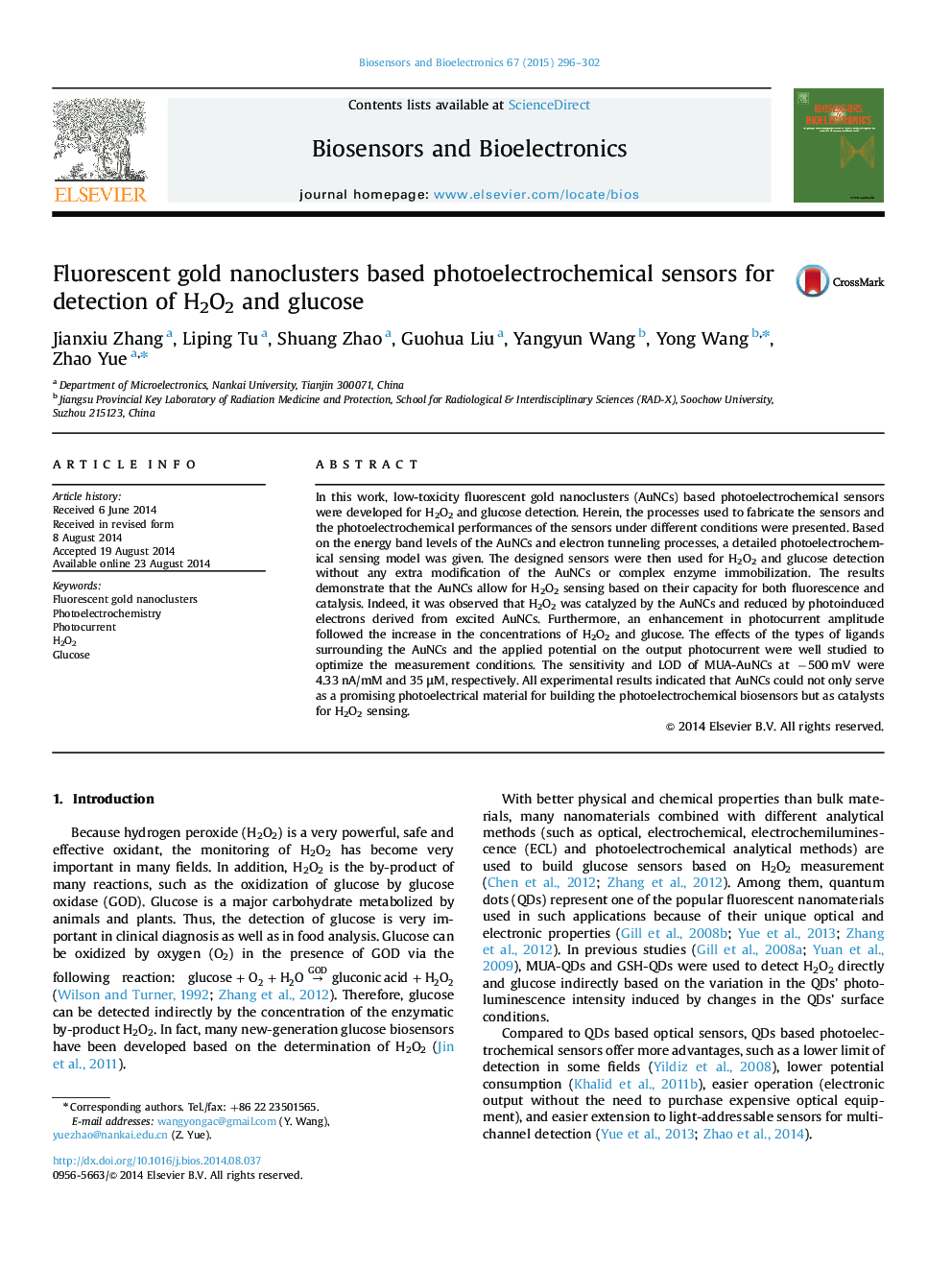| Article ID | Journal | Published Year | Pages | File Type |
|---|---|---|---|---|
| 7232572 | Biosensors and Bioelectronics | 2015 | 7 Pages |
Abstract
In this work, low-toxicity fluorescent gold nanoclusters (AuNCs) based photoelectrochemical sensors were developed for H2O2 and glucose detection. Herein, the processes used to fabricate the sensors and the photoelectrochemical performances of the sensors under different conditions were presented. Based on the energy band levels of the AuNCs and electron tunneling processes, a detailed photoelectrochemical sensing model was given. The designed sensors were then used for H2O2 and glucose detection without any extra modification of the AuNCs or complex enzyme immobilization. The results demonstrate that the AuNCs allow for H2O2 sensing based on their capacity for both fluorescence and catalysis. Indeed, it was observed that H2O2 was catalyzed by the AuNCs and reduced by photoinduced electrons derived from excited AuNCs. Furthermore, an enhancement in photocurrent amplitude followed the increase in the concentrations of H2O2 and glucose. The effects of the types of ligands surrounding the AuNCs and the applied potential on the output photocurrent were well studied to optimize the measurement conditions. The sensitivity and LOD of MUA-AuNCs at â500 mV were 4.33 nA/mM and 35 μM, respectively. All experimental results indicated that AuNCs could not only serve as a promising photoelectrical material for building the photoelectrochemical biosensors but as catalysts for H2O2 sensing.
Related Topics
Physical Sciences and Engineering
Chemistry
Analytical Chemistry
Authors
Jianxiu Zhang, Liping Tu, Shuang Zhao, Guohua Liu, Yangyun Wang, Yong Wang, Zhao Yue,
